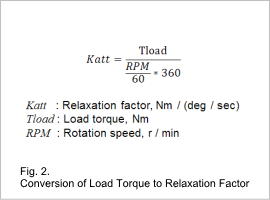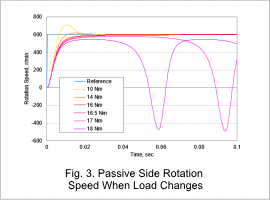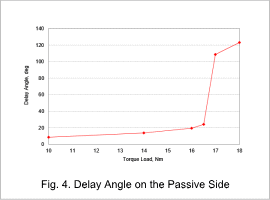Overview
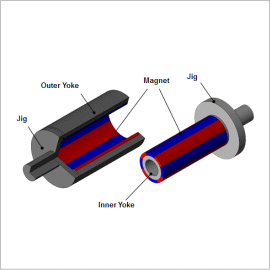
This document, presents an analysis for finding holding torque and an analysis for transient response during torque decoupling.
Holding Torque
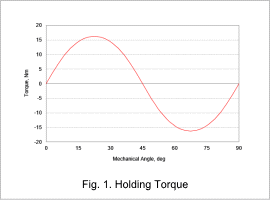
Fig. 1 shows the holding torque for 90 deg when the inner part is rotated. Peak torque at 22.5 deg is about 16.2 Nm.
Starting Response and Delay Angle
Load torque given to the passive side is based on the supposition of load occurring from circumstances such as fluid in the pump. Also, load torque dependency on rotation speed is considered, and the equation shown in Fig. 2 is used to assign the equation of motion as the relaxation factor.
The rotation speed of the passive side is displayed in Fig. 3 for when the load torque assigned to the passive side is 10 Nm, 14 Nm, 16 Nm, 16.5 Nm, 17 Nm, and 18 Nm. The rotation speed of the driving side is also displayed in the figure as the “Reference” line. Notice that the passive side is able to follow the rotation of the driving side until a load torque of 16.5 Nm is reached. Values of 17 Nm and 18 Nm do not follow the rotation, and the sides become decoupled.
Fig. 4 shows the delay angle of the passive side at the time the driving side makes one rotation. The delay angle when the load torque is 16.5 Nm is about 22 deg. For load torque of 17 Nm and 18 Nm, it can be seen that slippage is about 90 deg.
